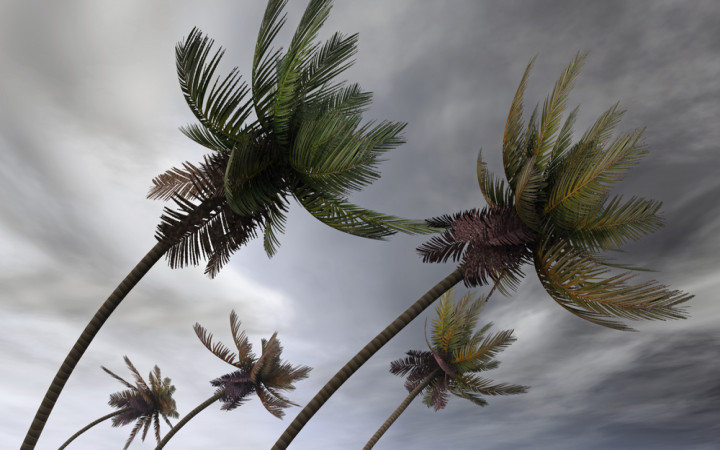Today’s Wonder of the Day was inspired by Tillie from nelson. Tillie Wonders, “who names storms and hurricanes” Thanks for WONDERing with us, Tillie!
Each year, as the summer comes to a close, hurricanes begin to appear. Hurricanes are huge tropical storms that can sometimes be as large as 600 miles across.
Hurricanes are defined by their extremely strong winds that can blow from 75 to 200 miles per hour. Unlike tornadoes, which usually last just a few minutes or less, hurricanes can last longer than a week.
They usually travel slowly at speeds of only 10 to 20 miles per hour as they cross the oceans. These storms usually occur in the southern Atlantic Ocean, Caribbean Sea, Gulf of Mexico or the eastern Pacific Ocean.
Hurricanes occur in many parts of the world, but they're not always called "hurricanes." For those of you who like words, you may be interested to know that hurricanes that form in the western Pacific Ocean are called "typhoons."
In the Indian Ocean, the Bay of Bengal and Australia, these storms are called "cyclones." They're all the same type of storm, though.
Hurricanes only form over very warm ocean water (80° F or warmer). As their winds blow in the same direction at the same speed, hurricanes gather heat and energy from warm ocean waters. As warm seawater evaporates, it feeds the hurricane's growing winds.
Hurricane winds rotate in a counter-clockwise direction around a calm center, known as the “eye" of the hurricane. Even though the winds of a hurricane may be raging at its farthest reaches, the “eye" has only light winds and fair weather.
At sea, hurricanes present a real danger to boats. Their most destructive effects occur, however, when they reach land. Heavy rain, strong winds and huge waves have been known to cause catastrophic damage to buildings, trees and cars.
The huge waves that hurricanes push toward land are called a "storm surge." Storm surges are extremely dangerous and often cause major flooding in coastal regions.
Even though hurricanes have existed for thousands of years, scientists have only studied them for about the last 100 years. Because of their massive size, only modern technology has allowed scientists to get a grasp on how hurricanes form and how they move.
Meteorologists classify hurricanes based on their wind speeds and potential for damage:
- Category 1: 74 to 95 mph winds
- Category 2: 96 to 110 mph winds
- Category 3: 111 to 130 mph winds
- Category 4: 131 to 155 mph winds
- Category 5: 155+ mph winds
Recent hurricanes that have caused major damage in the United States include Hurricane Ike and Hurricane Katrina. Other past hurricanes have had names like Opal, Andrew and Fran. How do they get these names?
Hurricanes are given names so that meteorologists can identify them and track them across the oceans. Since there are sometimes multiple hurricanes at a particular time, naming them helps to avoid confusion.
Since 1979, the World Meteorological Organization has used six lists of names — both male and female — in rotation. Each list contains a name for each letter of the alphabet, except for Q, U and Z. The same lists are reused every six years.
Every once in a while, a hurricane will cause so much damage that its name goes down in the history books. Hurricane Katrina is a recent example of such a destructive storm. When a storm is particularly bad, its name is retired, and a new name is added to the list.
Although hurricanes can form at any time, the hurricane season in the Atlantic Ocean is usually June 1 to November 30, with most hurricanes occurring in the fall months. The eastern Pacific Ocean hurricane season runs from about May 15 to November 30.




